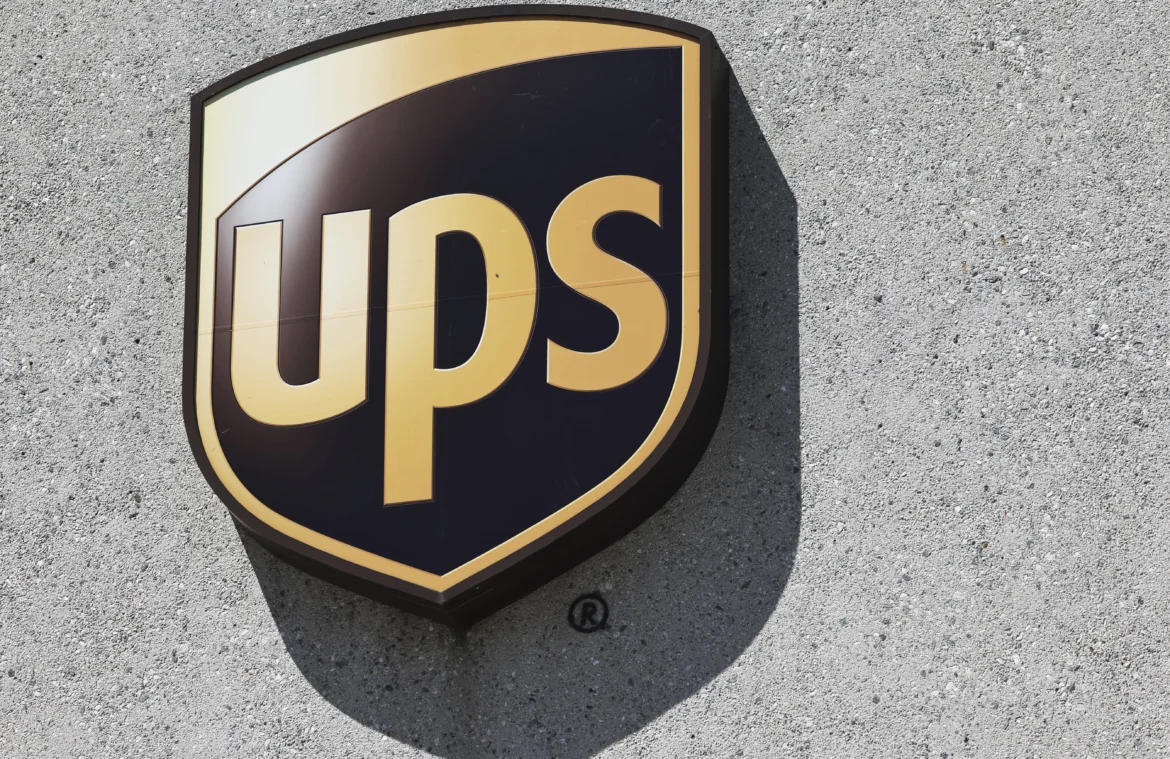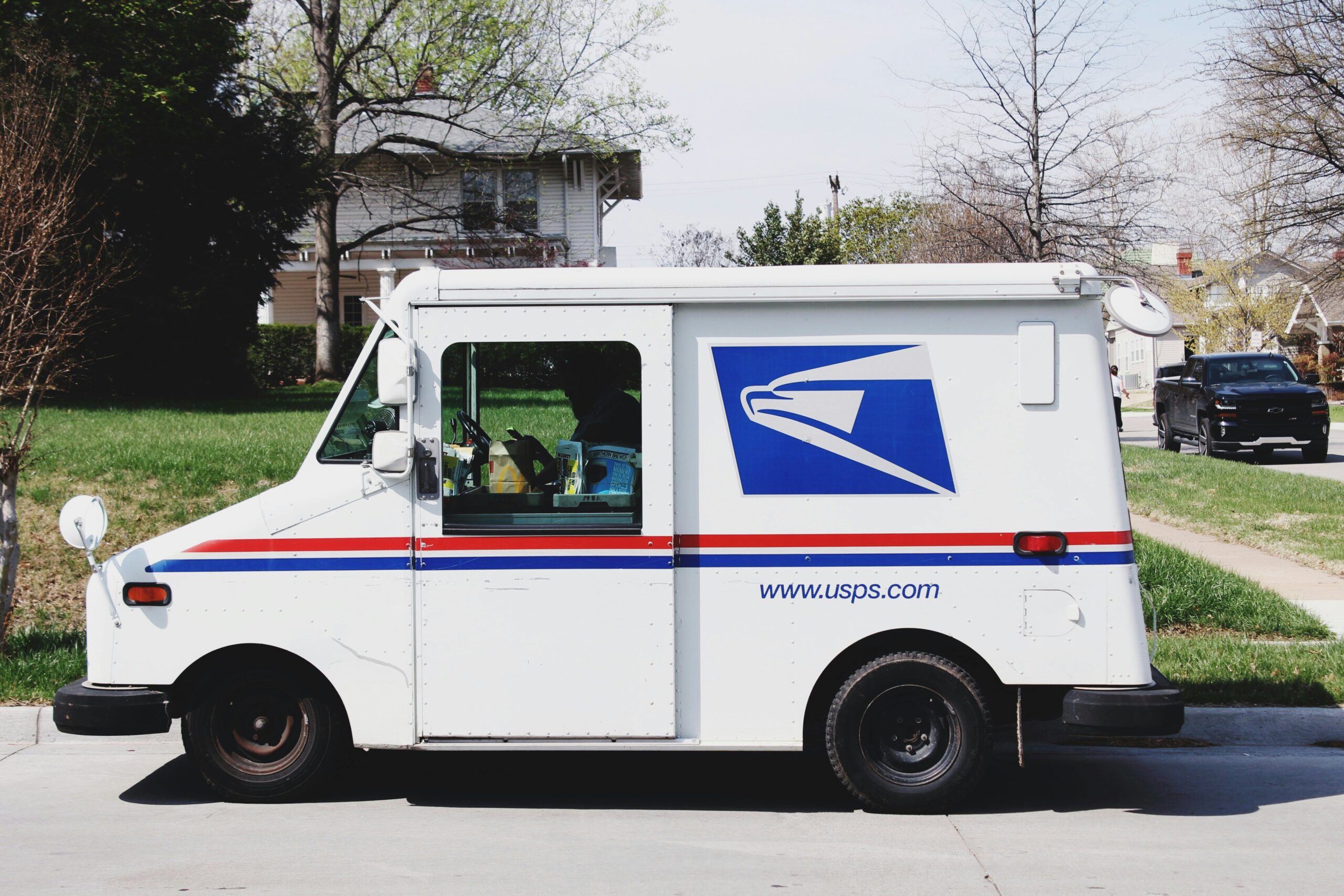Introduction to USPS and UPS Package Delivery
The United States Postal Service (USPS) and United Parcel Service (UPS) are two of the most significant players in the package delivery industry within the United States. Established to ensure efficient mail and package distribution, these organizations have played crucial roles in facilitating commerce and communication for decades. The USPS, an independent establishment of the executive branch of the U.S. government, has been delivering mail since its inception in 1775, driven by its mission to provide universal service. In contrast, UPS, founded in 1907, emerged as a private courier company focusing on package tracking and efficient delivery solutions.
Over the years, the partnership between USPS and UPS has evolved, influenced by shifting consumer demands and the rising significance of e-commerce. While USPS covers residential and rural areas with its extensive network, UPS specializes in express package delivery, utilizing robust logistics and advanced technology. This collaboration has allowed both organizations to leverage their strengths, ensuring comprehensive service across various geographical locations. Their combined capabilities have contributed significantly to the growth of online shopping and enhanced delivery options for customers across the nation.
As we look ahead, the impending changes following the end of their contractual agreements pose challenges and opportunities for both USPS and UPS. Understanding the foundational aspects of these companies is crucial to grasp the potential implications on the package delivery landscape. The transition may impact everything from pricing to delivery times, and consumers must stay informed about what these adjustments could mean for their shipping options. In the subsequent sections, we will delve deeper into the structure of USPS and UPS, along with an analysis of how these changes may influence the future of package delivery services.
Historical Context of USPS and UPS Collaboration
The relationship between the United States Postal Service (USPS) and United Parcel Service (UPS) has evolved significantly since the early 20th century, directly influencing the logistics and shipping landscape. Founded in 1907, UPS initially focused on parcel delivery within local areas. Meanwhile, the USPS, established long before, was already a cornerstone of national communication and logistics. A pivotal moment occurred in the 1980s when both entities began to recognize the advantages of collaboration in navigating the increased demand for package delivery services.
During the 1990s, partnerships between USPS and UPS became more pronounced, as they began to combine their strengths to optimize delivery systems. This collaboration was particularly essential as e-commerce gained traction in the late 1990s and early 2000s, necessitating more efficient shipping solutions. By pooling their resources and expertise, USPS and UPS could address challenges such as rising fuel costs and improving service efficiency. The strategic alliance included initiatives where USPS offered last-mile delivery services for UPS, allowing packages to reach rural and hard-to-access areas more easily and effectively.
Key milestones in the relationship included the implementation of the USPS’s 5-day delivery schedule in 2009, which prompted UPS to reevaluate its operational strategies to remain competitive. Moreover, USPS offered a variety of innovative services, such as the use of mobile scanning technology and automated sorting systems, enhancing the effectiveness of their joint operations. These developments underscored the adaptability of both organizations in response to shifting market demands, demonstrating how their collaboration not only benefited their individual services but also redefined customer expectations in the shipping industry.
The complexities of their collaboration highlight a shared objective: meeting consumer needs in an ever-evolving marketplace. Both USPS and UPS have continually adapted their services in response to industry changes, setting the stage for an interesting future as their contractual relationship progresses.
Reasons Behind the End of the USPS-UPS Contract
The termination of the contract between the United States Postal Service (USPS) and United Parcel Service (UPS) is a significant decision that stems from various factors influencing both organizations. Firstly, market changes have drastically shaped the logistics landscape. The advent of e-commerce has led to a rapid increase in package volume, forcing delivery services to adapt. As consumer preferences evolve towards faster and more flexible delivery options, both USPS and UPS have re-evaluated their strategies to enhance their service offerings. This shift in focus has created a disparity in operational priorities, prompting the need for the contract’s reassessment.
Moreover, evolving customer needs have played a crucial role in this transition. Today’s consumers demand speed and reliability from delivery services, pushing companies to innovate continuously. These changing expectations compel organizations like USPS and UPS to pivot their business models to meet new consumer standards more effectively. As each company seeks to improve its competitive edge independently, the necessity for collaborative agreements fades, leading to contract dissolution.
Financial implications also cannot be overlooked. As operational costs rise and profit margins tighten, both organizations face increasing pressure to streamline their services. The partnership may have outlived its initial financial viability, leading to a reanalysis of economics influencing delivery services. Furthermore, strategic shifts within both USPS and UPS indicate a desire for greater autonomy in decision-making and operational processes, steering them towards independent pathways that better align with their long-term objectives.
In light of these considerations, the end of the USPS-UPS contract emerges as a calculated change influenced by market dynamics, customer expectations, financial constraints, and strategic reassessments within both companies. This decision reflects the ongoing evolution in the package delivery sector as these two entities navigate a rapidly changing environment.
Implications of the Contract’s End for Consumers
The conclusion of the contract between the United States Postal Service (USPS) and United Parcel Service (UPS) has raised several important implications for consumers who rely on these services for their package deliveries. As this partnership ends, one of the most significant areas to consider is service levels. Consumers may experience fluctuations in reliability, particularly if they frequently utilize UPS for their shipping needs, as the contract has allowed for certain synergies in delivery operations that may no longer exist.
Moreover, delivery times are likely to undergo changes in the immediate aftermath of the contract’s expiration. Users can anticipate alterations in the speed of delivery, especially in regions where USPS and UPS previously collaborated closely. This could result in longer waiting periods for delivery, making it essential for consumers to plan their shipments accordingly. It is advisable for customers to revisit service agreements or expected timelines for package arrivals, particularly during peak seasons or busy shopping periods.
Another critical factor is the potential for shifts in pricing structures. With the end of the USPS-UPS partnership, consumers may see changes in shipping costs as both entities adjust their pricing strategies in response to the new landscape. Increased competition or a drive to improve service options could lead to fluctuating rates, which may impact budgeting for shipping needs.
The overall tracking experience is also expected to evolve. With separate operations, package tracking may become less seamless than before. Consumers may need to familiarize themselves with the individual tracking systems of USPS and UPS, which could lead to a fragmented experience when managing multiple shipments across different platforms. This transition demands a proactive approach from consumers to stay informed and adapt to these changes effectively.
Impact on Businesses and E-commerce
As the USPS and UPS package delivery landscape undergoes significant changes, businesses—particularly those within the e-commerce sector—must prepare for the implications that accompany these transitions. The reliance on these delivery services for efficient and timely shipping has been a cornerstone for operational success. However, with upcoming adjustments, companies may face both challenges and opportunities that will necessitate a reevaluation of their logistics strategies.
One of the foremost concerns for businesses is logistics planning. The potential for service disruptions or alterations to delivery schedules might complicate operations. Companies will need to assess their current logistics frameworks to ensure resilience against potential delays or markdowns in service quality. This reexamination may require businesses to diversify their delivery options, moving beyond a singular reliance on USPS and UPS.
Cost management will also become a crucial factor as the changes take effect. If adjustments lead to increased shipping fees or decreased service levels, companies will need to evaluate the financial implications. It may be necessary for businesses to explore alternative carriers or negotiate rates with existing partners to maintain profitability while still delivering customer satisfaction. Such actions represent both a challenge and an opportunity, empowering businesses to create more flexible and cost-effective shipping solutions.
Ultimately, shifts in delivery strategies may emerge. As e-commerce grows, innovative delivery methods, such as same-day delivery services or localized fulfillment centers, may take precedence. Businesses willing to adapt to evolving logistics conditions will not only mitigate risks but also position themselves for enhanced customer satisfaction and operational efficiency. The forthcoming changes in USPS and UPS package delivery could serve as a catalyst for reevaluating and refining logistical approaches that benefit businesses in the long run.
Exploring Alternatives: Other Delivery Services
As consumers and businesses anticipate the changes resulting from the imminent contract adjustments between USPS and UPS, it is prudent to examine alternative delivery services that could effectively meet their package delivery needs. One of the most prominent competitors is FedEx, known for its reliable shipping options and global reach. FedEx offers various services, including express delivery, overnight shipping, and their ground services, catering to differing timelines and budgets. This versatility positions FedEx as a strong contender for those seeking dependable delivery solutions.
In addition to FedEx, regional carriers present an increasingly viable option. Companies such as OnTrac, LaserShip, and LSO (Lone Star Overnight) specialize in specific geographic areas, often providing lower rates and faster delivery times compared to national providers. These regional shipping services have demonstrated substantial growth in response to the evolving logistics landscape and could be more suitable for businesses focusing on localized deliveries. Their familiarity with the regional market can also facilitate superior service levels.
Emerging logistics technologies are also likely to play a significant role in bridging the gaps created by USPS and UPS changes. Innovations such as drone deliveries, autonomous vehicles, and advanced supply chain management systems are garnering significant attention and investment. These technologies not only promise to reduce shipping times but also aim to enhance efficiency in the logistics process. Companies that embrace these technological advancements may offer a competitive edge in serving the needs of consumers seeking reliable and speedy delivery options.
Overall, as the delivery landscape evolves following the contract changes between USPS and UPS, businesses and consumers can explore a variety of alternatives, including established couriers like FedEx, burgeoning regional services, and promising logistics innovations. Each of these options presents unique advantages depending on specific shipping requirements, ensuring that effective solutions remain available in the marketplace.
Predicted Changes in Delivery Landscape
The landscape of package delivery is poised for significant changes following the conclusion of the USPS-UPS contract. As market dynamics evolve, a notable shift in competition among delivery service providers is anticipated. With the end of this established partnership, several companies may emerge, striving to capture greater market share. This transition could drive innovation, pushing providers to enhance their offerings and improve customer experiences significantly.
One of the most promising innovations on the horizon is the widespread adoption of drone delivery systems. As technology continues to advance, drones are becoming increasingly capable of handling small to medium-sized packages efficiently. This method not only promises faster delivery times but can also reduce operational costs and lower the environmental impact associated with traditional delivery vehicles. The integration of drones into the delivery ecosystem may redefine logistics and distribution models, allowing companies to reach customers in previously inaccessible areas.
Furthermore, automation is likely to play a critical role in shaping the future of package delivery. Automated sorting facilities and robotic delivery systems can streamline operations, reducing the need for human labor in repetitive tasks. As a result, delivery providers can allocate resources more effectively, ensuring timely and accurate shipments. This trend emphasizes the importance of logistic technologies in enhancing operational efficiency.
In addition to advancements in technology, sustainability efforts will garner increased attention. In response to growing consumer demand for eco-friendly practices, delivery companies are expected to prioritize green initiatives. This shift may involve expanding electric vehicle fleets, reducing packaging waste, and adopting renewable energy sources. These changes not only meet customer expectations but also contribute to a more sustainable logistics industry.
What USPS and UPS Are Doing Moving Forward
Both the United States Postal Service (USPS) and United Parcel Service (UPS) are embarking on strategic initiatives aimed at enhancing their services and maintaining competitiveness in the evolving package delivery landscape. As the logistics industry continues to adapt to changing consumer demands and technological advancements, these two companies have outlined ambitious plans for the future.
USPS is focusing on modernization efforts that include the digitization of operations to streamline processing and improve efficiency. The organization is investing in new technology that can assist in better tracking of parcels, ensuring timely deliveries. Additionally, USPS aims to expand its service offerings, including the introduction of more flexible delivery options tailored for customers’ preferences. By enhancing last-mile delivery services, the Postal Service seeks to cater to a wider customer base, from individual consumers to large businesses.
On the other hand, UPS is honing its strategy to appeal to a diverse array of customers. This includes leveraging its extensive network to refine supply chain solutions for e-commerce businesses, which have seen tremendous growth in recent years. UPS is also committed to sustainability, pledging to reduce carbon emissions and implement eco-friendly practices throughout its operations. This commitment not only addresses consumer demands for sustainable practices but also positions UPS favorably in an increasingly environmentally conscious marketplace.
Moreover, both USPS and UPS are exploring collaborations with emerging technology companies to adopt artificial intelligence and data analytics for better decision-making. This drive toward technological integration is essential for both organizations as they prepare for a competitive future in package delivery. Their approaches demonstrate a recognition of the need to evolve and respond proactively to changing consumer behaviors and market dynamics.
Conclusion: Embracing Change in Package Delivery
In contemplating the recent developments in USPS and UPS package delivery systems, it becomes evident that the landscape of shipping services is undergoing significant transformations. As we have discussed, these changes may stem from various factors, including shifts in consumer behavior, advancements in technology, and adjustments in contract agreements between service providers. Understanding these dynamics is crucial for individuals and businesses alike to navigate the evolving package delivery environment effectively.
One of the primary takeaways from our discussion is the importance of vigilance in monitoring updates related to USPS and UPS services. As consumer preferences dictate alterations in shipping strategies, being informed about the latest changes can empower users to make educated decisions regarding their shipping solutions. Additionally, as service standards and delivery times evolve, staying abreast of new offerings from both USPS and UPS can facilitate a smoother shipping experience.
Moreover, adaptability remains a key factor in thriving within the changing framework of package delivery. The logistics industry continues to introduce innovative solutions designed to enhance efficiency and responsiveness. By embracing these new technologies and methodologies, shippers can optimize their operations and stay competitive in the market. Emphasizing flexibility in response to industry changes not only supports businesses in managing costs but also meets the immediate needs of consumers who rely on timely deliveries.
Finally, as both USPS and UPS navigate the complexities of their evolving contracts and service models, it is essential for stakeholders to engage proactively in the shipping process. By considering alternative carriers when necessary, being open to new logistical strategies, and understanding the implications of these changes, stakeholders can ensure a successful adaptation to the future of package delivery. Staying informed, adaptable, and proactive will ultimately lead to more effective and reliable shipping outcomes in this dynamic industry.


